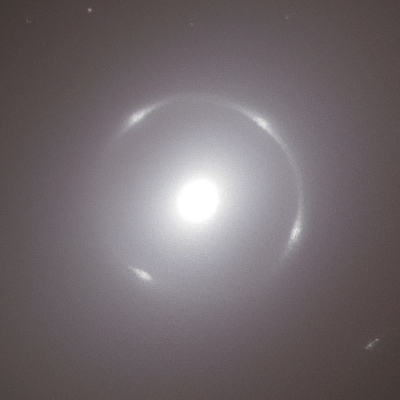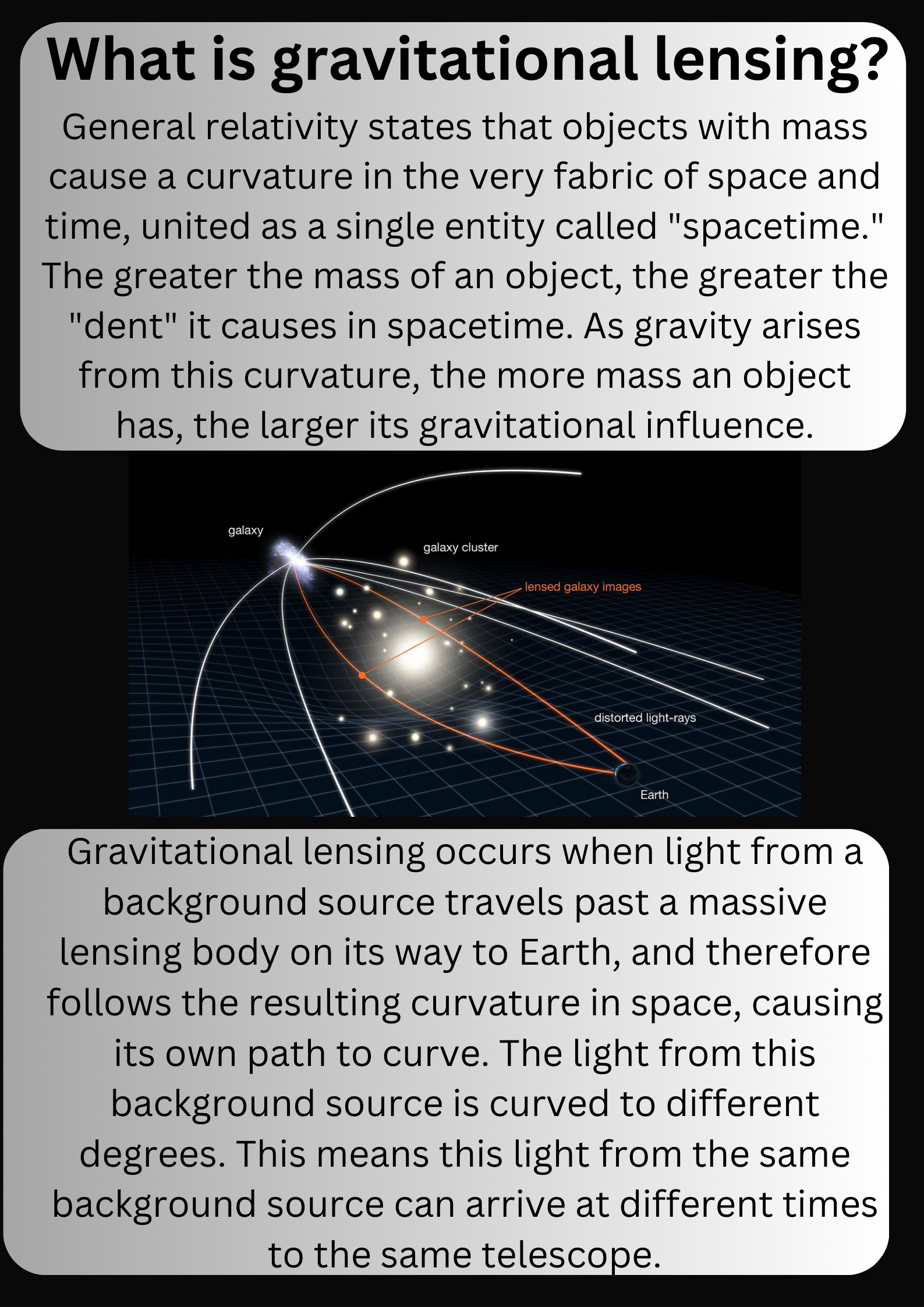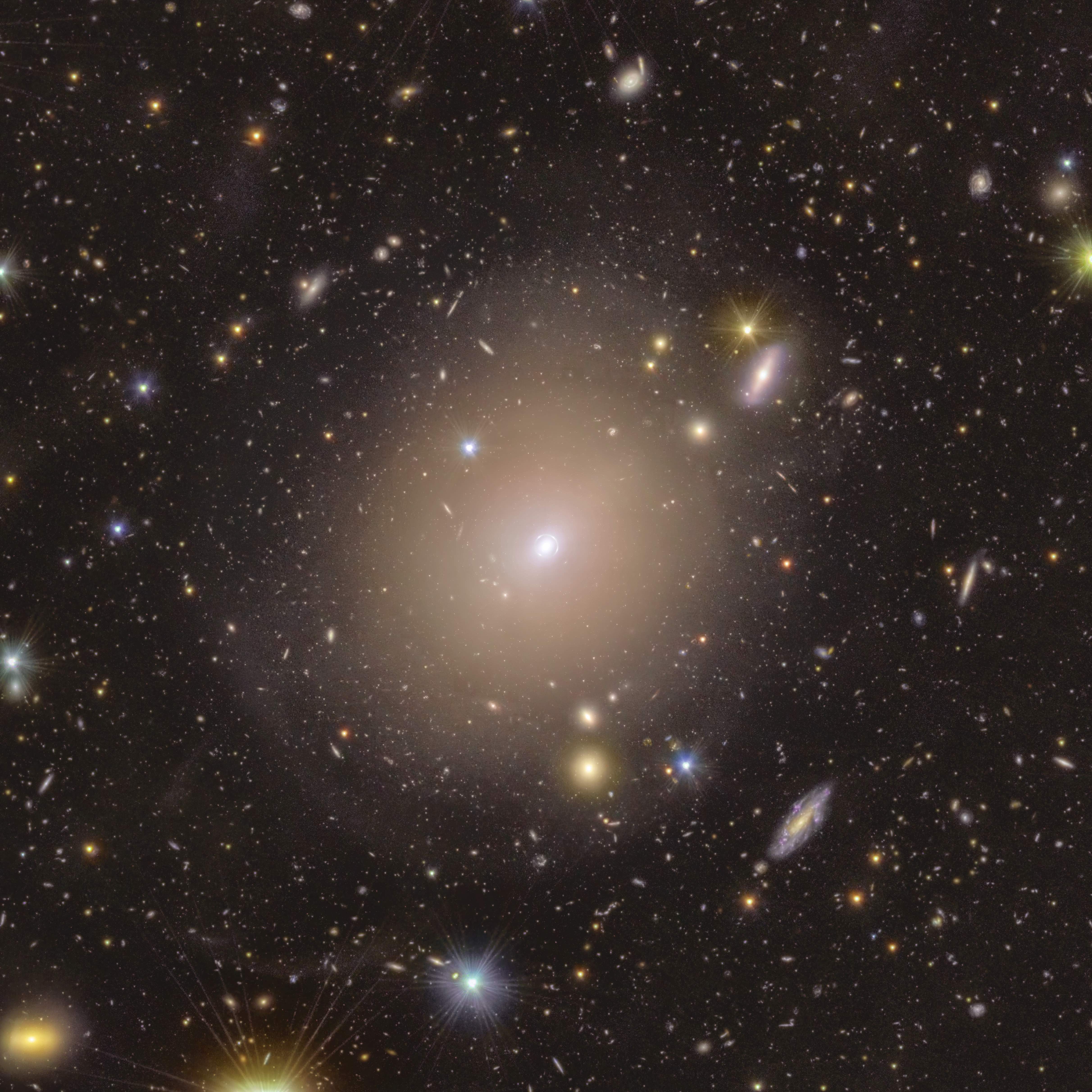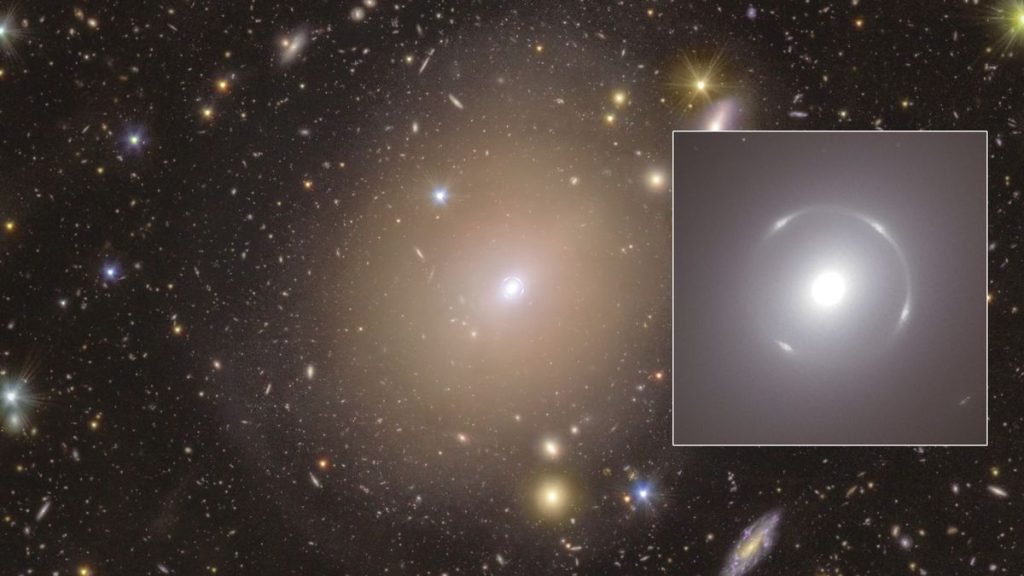The Euclid space telescope has, by chance, discovered its first Einstein ring, and it is absolutely stunning. Beyond its aesthetic appeal, this perfectly circular Einstein ring has allowed researchers to “weigh” the dark matter at the heart of a galaxy almost 600 million light-years away.
The European Space Agency (ESA) spacecraft, which launched in July 2023, spotted its first strong gravitational lens as it began to build the most precise 3D map ever made of the universe ever created.
The map will delve back into 10 billion years of cosmic history, helping scientists investigate the mysteries of the dark universe: dark matter and dark energy. Hence Euclid’s unofficial nickname “the dark universe detective.”
The gravitational lens in question is the galaxy NGC 6505, located around 590 million light-years away. Though this sounds like an incredible distance, this is actually relatively close for a gravitational lens.
“This first strong gravitational lens discovered by Euclid has unique characteristics,” team member and National Institute for Astrophysics researcher Massimo Meneghetti said in a statement. “It is truly rare to find a galaxy relatively close to us, like this one found in the NGC catalog (New Galaxy Catalog), one of the catalogs of nearby galaxies that acts as a strong gravitational lens.”
Galaxies so close to the Milky Way are generally not able to focus the light of background sources strongly enough to form multiple images — that is, unless they contain enormous amounts of matter in their central regions.

The light that forms the perfect Einstein ring seen by Euclid comes from a much more distant galaxy. It is so distant that it has been traveling to us for around 4.4 billion years, meaning when it left its source, the solar system was around 200 million years old.
The team behind this research has nicknamed it “Altieri’s lens” after its discoverer, astronomer Bruno Altieri.
“The formation of complete Einstein rings like that of NGC 6505 is an even rarer event because it requires that the lens galaxy and the source galaxy are perfectly aligned with our telescope,” Meneghetti continued. “For these reasons, we do not expect Euclid to observe many lenses like NGC 6505.
“Even considering the large area of sky that will be covered during the mission, we expect to be able to discover at most 20 lenses like this one.”
Breaking space news, the latest updates on rocket launches, skywatching events and more!
What are Einstein rings?

Einstein rings share their name with history’s most famous physicist because they emerge from an element of Einstein’s 1915 theory of general relativity, called “gravitational lensing.”
As a result of gravitational lensing, as explained above, a single background light-emitting body can appear at multiple places in a single image taken by a telescope like Euclid. These objects can form arrangements like Einstein rings, Einstein crosses, and even rarer Einstein zig-zags.
The NGC 6505 gravitational lens was discovered by chance in one of the first patches of sky observed by Euclid, just two months after its July 2023 launch and during its mission verification phase.
As explained above, the distribution of light from a background source is intrinsically tied to the mass of the gravitational lens, in this case, NGC 6505.
That means that this Einstein ring can be used as a probe of the mass distribution of that galaxy, including the mass of its otherwise invisible dark matter.

Additionally, because Altieri’s lens has a radius smaller than NGC 6505, the team was able to investigate the composition and structure of the galaxy’s central regions, where it is dominated by stars and where dark matter is less prominent.
“Since gravitational lensing is the most precise method to measure mass, by combining the Einstein ring model and the distribution of stars in the galaxy, we were able to measure that the fraction of mass composed of dark matter at the center of the lens is only 11 percent,” team member Giulia Despali from the University of Bologna said. “We recall that dark matter constitutes about 85 percent of the total matter in our universe, so the central regions of galaxies are truly peculiar.”
The team was able to precisely measure the properties of NGC 6505. This revealed a complex structure that varies with the distance from the center. They were also able to estimate the proportion of low-mass stars to high-mass stars, a quality called the initial mass function.
“The new Euclid observations, therefore, help us to understand more about both the dark universe and the processes of formation and evolution of galaxies,” Despali continued.
Images like this perfect Einstein Ring are manifestations of strong gravitational lensing, but moving forward, Euclid will use the minor gravitational distortion of “weak gravitational lensing” to study the dark universe.
Though Euclid is expected to uncover just around 20 strong gravitational lens events like Altieri’s lens, the space telescope is expected to find over one hundred thousand other gravitational lenses in the 14,000 square degrees of the sky it will observe during its mission.
The result will be a detailed map of the distribution of matter, both visible and dark, in galaxies and galaxy clusters at various distances from the local universe. Thus, Euclid will help to study the nature and evolution over time of both dark matter and dark energy.
The team’s research was published on Monday (Feb. 10) in the journal Astronomy & Astrophysics.







